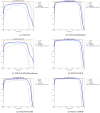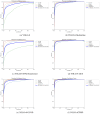Adaptive condition-aware high-dimensional decoupling remote sensing image object detection algorithm
- PMID: 39209928
- PMCID: PMC11362310
- DOI: 10.1038/s41598-024-71001-5
Adaptive condition-aware high-dimensional decoupling remote sensing image object detection algorithm
Abstract
Remote Sensing Image Object Detection (RSIOD) faces the challenges of multi-scale objects, dense overlap of objects and uneven data distribution in practical applications. In order to solve these problems, this paper proposes a YOLO-ACPHD RSIOD algorithm. The algorithm adopts Adaptive Condition Awareness Technology (ACAT), which can dynamically adjust the parameters of the convolution kernel, so as to adapt to the objects of different scales and positions. Compared with the traditional fixed convolution kernel, this dynamic adjustment can better adapt to the diversity of scale, direction and shape of the object, thus improving the accuracy and robustness of Object Detection (OD). In addition, a High-Dimensional Decoupling Technology (HDDT) is used to reduce the amount of calculation to 1/N by performing deep convolution on the input data and then performing spatial convolution on each channel. When dealing with large-scale Remote Sensing Image (RSI) data, this reduction in computation can significantly improve the efficiency of the algorithm and accelerate the speed of OD, so as to better adapt to the needs of practical application scenarios. Through the experimental verification of the RSOD RSI data set, the YOLO-ACPHD model in this paper shows very satisfactory performance. The F1 value reaches 0.99, the Precision value reaches 1, the Precision-Recall value reaches 0.994, the Recall value reaches 1, and the mAP value reaches 99.36 , which indicates that the model shows the highest level in the accuracy and comprehensiveness of OD.
Keywords: Condition awareness technology; High-dimensional decoupling technology; Object detection; Remote sensing image.
© 2024. The Author(s).
Conflict of interest statement
The authors declare no competing interests.
Figures













References
-
- Xu, F., Liu, J., Sun, H., Wang, T. & Wang, X. Research progress on vessel detection using optical remote sensing image. Opt. Precis. Eng.29, 916–931 (2021). 10.37188/OPE.2020.0419 - DOI
-
- Huang, Z., Wu, F., Fu, Y., Zhang, Y. & Jiang, X. Review of deep learning-based algorithms for ship target detection from remote sensing images. Opt. Precis. Eng.31, 2295–2318 (2023). 10.37188/OPE.20233115.2295 - DOI
-
- Wang, Y., Ma, L. & Tian, Y. State-of-the-art of ship detection and recognition in optical remotely sensed imagery. Acta Autom. Sin.37, 1029–1039 (2011).
-
- Bai, C., Bai, X. & Wu, K. A review: Remote sensing image object detection algorithm based on deep learning. Electronics12, 4902 (2023). 10.3390/electronics12244902 - DOI
-
- Gui, S., Song, S., Qin, R. & Tang, Y. Remote sensing object detection in the deep learning era—a review. Rem. Sens.16, 327 (2024). 10.3390/rs16020327 - DOI
Grants and funding
- Grant No. 23JRRA860/The Natural Science Foundation Key Project of Gansu Province
- 2023YFSH0043/The Inner Mongolia Key R and D and Achievement Transformation Project
- 2023YFDZ0043/The Inner Mongolia Key R and D and Achievement Transformation Project
- ZDYF2304/The Key Research and Development Project of Lanzhou Jiaotong University and the Key Talent Project of Gansu Province.
LinkOut - more resources
Full Text Sources

